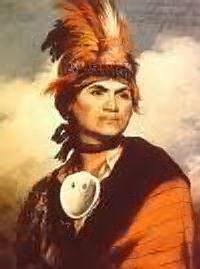
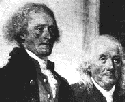 Even as Europeans were enslaving Indians, the Indians were setting them free. The American Indian arguably was responsible for Europe's Age of Enlightenment and the developments that followed.
Even as Europeans were enslaving Indians, the Indians were setting them free. The American Indian arguably was responsible for Europe's Age of Enlightenment and the developments that followed.

 Even as Europeans were enslaving Indians, the Indians were setting them free. The American Indian arguably was responsible for Europe's Age of Enlightenment and the developments that followed.
Even as Europeans were enslaving Indians, the Indians were setting them free. The American Indian arguably was responsible for Europe's Age of Enlightenment and the developments that followed.
Farfetched? Not at all. In his book Indian Givers, Jack Weatherford devotes a whole chapter to how contact with Native people led to revolution in Europe. As he explains:
The most consistent theme in the descriptions penned about the New World was amazement at the Indians' personal liberty, in particular their freedom from rulers and from social classes based on ownership of property. For the first time the French and the British became aware of the possibility of living in social harmony and prosperity without the rule of a king.
.
.
.
During this era the thinkers of Europe forged the ideas that became known as the European Enlightenment, and much of its light came from the torch of Indian liberty that still burned brightly in the brief interregnum between their first contact with the Europeans and their decimation by the Europeans. The Indian, particularly the Huron, became the "noble savage," the man of liberty living in the "natural state." While a few Europeans chose the path of Violette and left the corrupt world of Europe for America, others began working on ideas and plans to change Europe by incorporating some of the ideas of liberty into their own world. Almost all of the plans involved revolutionary changes to overthrow the monarchy, the aristocracy, or the church, and in some cases even to abolish money and private property.
Indian traditions of liberty
Newcomb: On the North American Indian tradition of liberty
Posted: October 26, 2006
by: Steven Newcomb / Indigenous Law Institute
In his 1782 "note on Virginia," Thomas Jefferson pointed out that American Indians in the East had traditionally divided themselves into relatively small societies. He said that this was, no doubt, the result of the Indians having "never submitted themselves to any laws, to any coercive power, or any shadow of government."
Native societies, said Jefferson, controlled their internal relations by "their manners, and that moral sense of right and wrong" that was as much a part of their nature as "the sense of tasting and feeling" is part of the nature of any person.
An offense by any person against that moral sense of right and wrong within a given Native society, noted Jefferson, "is punished by contempt, by exclusion from society, or, where the case is serious, [such] as that of murder, by the individuals whom it concerns."
As "[i]mperfect as this species of coercion may seem," said Jefferson, "crimes are very rare among" the Indians. Jefferson then posed a most interesting question: Which "submits man to the greatest evil," "no law, as among the savage Americans, or too much law, as among the civilized Europeans"?
Jefferson answered that "one who has seen both conditions of existence would pronounce" that too much law as among the civilized Europeans submits man to the greatest evil: "and that the sheep are happier of themselves, than under the care of wolves." It is because large societies cannot exist without government, said Jefferson, that the Native societies "break themselves into small ones."
What I believe Jefferson was noticing is the North American Indian tradition of liberty: a truly free way of life, without monarchs or despotic leaders who could dictate their will. Such societies were regulated from within; not by written laws, but a code of honor, respect, honesty, and an abiding appreciation of the sacred web of life. The result was a sense of liberty in the beauty of a natural setting that is now difficult for many of us to comprehend let alone imagine being able to live as a way of life.
European thinkers such as Montaigne, Rousseau and Locke used the North American Indian model of liberty as a means of critiquing the oppressive hierarchical order of church and state in Europe. Before coming into contact with Native liberty, Europeans simply had no example to draw upon that could provide them with a meaningful alternative to a monarchial and feudal order. The European Enlightenment period was greatly influenced by those chroniclers who provided Europe with the example of Native liberty.
Historian Gregory Schaaf, in his remarkable book "Wampum Belts and Peace Trees: George Morgan, Native Americans, and Revolutionary Diplomacy" (1990, Fulcrum Publishers), deals extensively with the Lenape, a nation with which the early colonists had extensive relations. Schaaf provides a beautiful summary of the Lenape worldview that enabled the people to live a spiritual life of liberty:
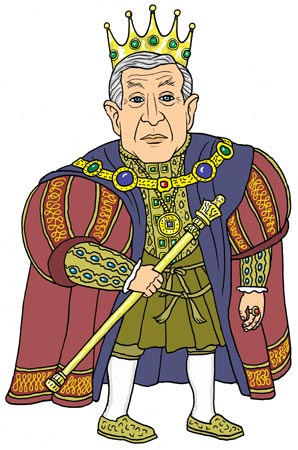
"Lenape philosophy was an ancient form of democracy. Traditional Lenape recognized not only the rights of all men, but those of all women. They also believed that human beings should respect life — animals, plants, and even tiny insects — because all had been made by the Creator for a purpose. According to the Lenape the mountains, the rivers, the Earth, and the heavens above were created in harmony for a divine purpose. They viewed the entire universe as alive with spiritual power."
Schaaf also wrote that "among traditional native people, the right to liberty meant more than just political freedom for male landowners and the abolition of slavery for some races. Liberty encompassed the divine right of everyone and everything to exist in a natural state as the Creator had intended."
Benjamin Franklin, who interacted with Native societies in the East, specifically used the example of the Haudenosaunee Confederacy (then the Five Nations Confederacy) and Native liberty to advocate that the 13 British colonies break free from the British Empire and form their own independent confederacy. The eventual result was the Articles of Confederation and then the present U.S. Constitution (drafted in 1787 and ratified in 1789), which Congress later formally acknowledged was influenced by the example of the Confederacy of the Haudenosaunee and its Great Law of Peace.
The example of Native liberty that helped to liberate much of the world from dictatorial rule by monarchies seems particularly important at a time when President George W. Bush has, in the manner of a monarch, been consolidating power for the executive branch of the United States. Many legal scholars now say that Bush has assumed the mantle of a king or imperial presidency, and thereby threatened the separation of powers that the authors of the Constitution drafted into the constitutional framework. The concept of "separate branches" of government was borrowed from the Haudenosaunee concept of the Tree of Peace.
Bush's power grab, assisted by a Republican majority in Congress, has also threatened the Bill of Rights, which was intended to protect the civil liberties of the individual from abusive governmental actions and thereby prevent tyranny. With the recent passage of the Military Commissions Act that Bush signed into law on Oct. 17, he and Congress have even suspended the writ of habeas corpus that has been part of the English Common System since the Magna Carta of 1215 A.D.
Habeas corpus enables an accused person to reach a court to challenge any incarceration in the event someone believes he or she is being wrongfully held. The Military Commissions Act not only suspends habeas corpus for those persons charged as "enemy combatants," all in the name of waging the "war on terror"; it also allows Bush to define what constitutes torture for those people held as "enemy combatants." It remains an open question whether a "presumed innocent" U.S. citizen may be denied habeas corpus once charged as an "enemy combatant."
Jefferson said that the North American Indian tradition of liberty existed without "coercive power or shadow of government." By contrast, the latest phase of the political experiment known as "the United States of America" seems to be "an Empire way of life," predicated on coercive power, and a "shadow government," the existence of which was formally announced shortly after Sept. 11, 2001. An Empire way of life is predicated on the values, thoughts and behaviors of domination, a term inherited from the Roman Empire meaning "unrestricted power, absolute dominium, lordship, tyranny, despotism."
The question at this point seems to be: "Will the political experiment of the United States, which owes much to the North American Indian tradition of liberty, be able to survive this dark period of its history?"
Steven Newcomb, Shawnee/Lenape, is Indigenous Law Research Coordinator at the Sycuan Education Department, co-founder and co-director of the Indigenous Law Institute, and a columnist for Indian Country Today.
Indian traditions of democracy
From the NY Times:
Op-Ed Contributor
The Founding Sachems
By CHARLES C. MANN
Published: July 4, 2005
Amherst, Mass.
SEEKING to understand this nation's democratic spirit, Alexis de Tocqueville journeyed to the famous centers of American liberty (Boston, Philadelphia, Washington), stoically enduring their "infernal" accommodations, food and roads and chatting up almost everyone he saw.
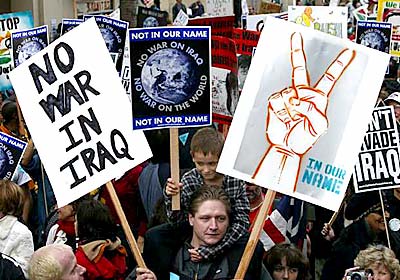
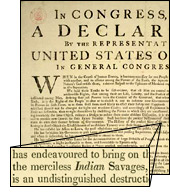
He even marched in a Fourth of July parade in Albany just ahead of a big float that featured a flag-waving Goddess of Liberty, a bust of Benjamin Franklin, and a printing press that spewed out copies of the Declaration of Independence for the cheering crowd. But for all his wit and intellect, Tocqueville never realized that he came closest to his goal just three days after the parade, when he stopped at the "rather unhealthy but thickly peopled" area around Syracuse.
Tocqueville's fascination with the democratic spirit was prescient. Expressed politically in Americans' insistence on limited government and culturally in their long-standing disdain for elites, that spirit has become one of this country's great gifts to the world.
When rich London and Paris stockbrokers proudly retain their working-class accents, when audiences show up at La Scala in track suits and sneakers, when South Africans and Thais complain that the police don't read suspects their rights the way they do on "Starsky & Hutch," when anti-government protesters in Beirut sing "We Shall Overcome" in Lebanese accents -- all these raspberries in the face of social and legal authority have a distinctly American tone. Or, perhaps, a distinctly Native American tone, for among its wellsprings is American Indian culture, especially that of the Iroquois.
The Iroquois confederation, known to its members as the Haudenosaunee, was probably the greatest indigenous polity north of the Rio Grande in the two centuries before Columbus and definitely the greatest in the two centuries after. A political and military alliance formed by the Seneca, Cayuga, Onondaga, Oneida, Mohawk and, after about 1720, the Tuscarora, it dominated, at its height, an area from Kentucky to Lake Ontario and Lake Champlain. Its capital was Onondaga, a bustling small city of several thousand souls a few miles south of where Tocqueville stopped in modern Syracuse.
The Iroquois confederation was governed by a constitution, the Great Law of Peace, which established the league's Great Council: 50 male royaneh (religious-political leaders), each representing one of the female-led clans of the alliance's nations. What was striking to the contemporary eye was that the 117 codicils of the Great Law were concerned as much with constraining the Great Council as with granting it authority. "Their whole civil policy was averse to the concentration of power in the hands of any single individual," explained Lewis Henry Morgan, a pioneering ethnographer of the Iroquois.
The council's jurisdiction was limited to relations among the nations and outside groups; internal affairs were the province of the individual nations. Even in the council's narrow domain, the Great Law insisted that every time the royaneh confronted "an especially important matter or a great emergency," they had to "submit the matter to the decision of their people" in a kind of referendum open to both men and women.
In creating such checks on authority, the league was just the most formal expression of a regionwide tradition. Although the Indian sachems on the Eastern Seaboard were absolute monarchs in theory, wrote the colonial leader Roger Williams, in practice they did not make any decisions "unto which the people are averse." These smaller groups did not have formal, Iroquois-style constitutions, but their governments, too, were predicated on the consent of the governed. Compared to the despotisms that were the norm in Europe and Asia, the societies encountered by British colonists were a libertarian dream.
To some extent, this freedom reflected North American Indians' relatively recent adoption of agriculture. Early farming villages worldwide have always had less authoritarian governments than their successors. But the Indians of the Northeast made what the historian José António Brandão calls "autonomous responsibility" a social ideal -- the Iroquois especially, but many others, too. Each Indian, the Jesuit missionary Joseph-François Lafitau observed, viewing "others as masters of their own actions and themselves, lets them conduct themselves as they wish and judges only himself."
So vivid were these examples of democratic self-government that some historians and activists have argued that the Great Law of Peace directly inspired the American Constitution. Taken literally, this assertion seems implausible. With its grant of authority to the federal government to supersede state law, its dependence on rule by the majority rather than consensus and its denial of suffrage to women, the Constitution as originally enacted was not at all like the Great Law. But in a larger sense the claim is correct. The framers of the Constitution, like most colonists in what would become the United States, were pervaded by Indian images of liberty.
For two centuries after Plymouth Rock, the border between natives and newcomers was porous, almost nonexistent. In a way difficult to imagine now, Europeans and Indians mingled, the historian Gary Nash has written, as "trading partners, military allies, and marital consorts."
In a letter to Thomas Jefferson, the aging John Adams recalled the Massachusetts of his youth as a multiracial society. "Aaron Pomham, the priest, and Moses Pomham, the King of the Punkapaug and Neponsit Tribes, were frequent visitors at my father's house," he wrote nostalgically. Growing up in Quincy, Mass., the young Adams frequently visited a neighboring Indian family, "where I never failed to be treated with whortleberries, blackberries, strawberries or apples, plums, peaches, etc." Benjamin Franklin was equally familiar with Indian company; representing the Pennsylvania colony, he negotiated with the Iroquois in 1754. A close friend was Conrad Weiser, an adopted Mohawk who at the talks was the Indians' unofficial host.
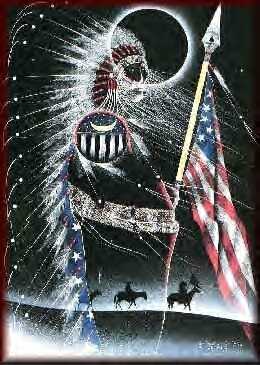
As many colonists observed, the limited Indian governments reflected levels of personal autonomy unheard of in Europe. "Every man is free," a frontiersman, Robert Rogers, told a disbelieving British audience, referring to Indian villages. In these places, he said, no person, white or Indian, sachem or slave, has any right to deprive anyone else of his freedom. The Iroquois, Cadwallader Colden declared in 1749, held "such absolute notions of liberty that they allow of no kind of superiority of one over another, and banish all servitude from their territories." (Colden, surveyor general of New York, was another Mohawk adoptee.)
Not every European admired this democratic spirit. Indians "think every one ought to be left to his own opinion, without being thwarted," the Flemish missionary monk Louis Hennepin wrote in 1683. "There is nothing so difficult to control as the tribes of America," a fellow missionary unhappily observed. "All these barbarians have the law of wild asses -- they are born, live, and die in a liberty without restraint; they do not know what is meant by bridle and bit."
Indians, for their part, were horrified to encounter European social classes, with those on the lower rungs of the hierarchy compelled to defer to those on the upper. When the 17th-century French adventurer Louis-Armand de Lom d'Arce, Baron de Lahontan, tried to convince the Huron, the Iroquois's northern neighbors, of Europe's natural superiority, the Indians scoffed.
Because Europeans had to kowtow to their social betters, Lahontan later reported, "they brand us for slaves, and call us miserable souls, whose life is not worth having." Individual Indians, he wrote "value themselves above anything that you can imagine, and this is the reason they always give for it, that one's as much master as another, and since men are all made of the same clay there should be no distinction or superiority among them."
INFLUENCED by their proximity to Indians -- by being around living, breathing role models of human liberty -- European colonists adopted their insubordinate attitudes. Lahontan was an example, despite his noble title; his account highlighted Indian freedoms as an incitement toward rebellion. Both the clergy and Louis XIV, the king whom Lahontan was goading, tried to suppress these dangerous ideas by instructing French officials to force a French education upon the Indians, complete with lessons in deferring to their social betters. The attempts, the historian Cornelius J. Jaenen reported, were "everywhere unsuccessful."
In the most direct way, Indian liberty made indigenous villages into competitors for colonists' allegiance. Colonial societies could not become too oppressive, because their members -- surrounded by examples of free life -- always had the option of voting with their feet.
It is likely that the first British villages in North America, thousands of miles from the House of Lords, would have lost some of the brutally graded social hierarchy that characterized European life. But it is also clear that they were infused by the democratic, informal brashness of American Indian culture. That spirit alarmed and discomfited many Europeans, aristocrat and peasant alike. Others found it a deeply attractive vision of human possibility.
Historians have been reluctant to acknowledge this contribution to the end of tyranny worldwide. Yet a plain reading of Locke, Hume, Rousseau and Thomas Paine shows that they took many of their illustrations of liberty from native examples. So did the colonists who held their Boston Tea Party dressed as "Mohawks." When others took up European intellectuals' books and histories, images of Indian freedom had an impact far removed in time and space from the 16th-century Northeast.
The pioneering suffragists Elizabeth Cady Stanton and Matilda Joslyn Gage, both Finger Lakes residents, were inspired by the Great Law's extension of legal protections to women. "This gentile constitution is wonderful!" Friedrich Engels exclaimed (though he apparently didn't notice its emphasis on limited state power).
Just like their long-ago confreres in Boston, protesters in South Korea, China and Ukraine wore "Native American" makeup and clothing in, respectively, the 1980's, 1990's, and the first years of this century. Indeed, it is only a little exaggeration to claim that everywhere liberty is cherished -- from Sweden to Soweto, from the streets of Manila to the docks of Manhattan -- people are descendants of the Iroquois League and its neighbors.
Charles C. Mann is the author of the forthcoming "1491: New Revelations of the Americas Before Columbus."
A NY Times review of Mann's book (10/9/05) notes what we lost with the Indians' destruction:
As Mann writes, "Having grown separately for millennia, the Americas were a boundless sea of novel ideas, dreams, stories, philosophies, religions, moralities, discoveries and all the other products of the mind. Few things are more sublime or characteristically human than the cross-fertilization of cultures. The simple discovery by Europe of the existence of the Americas caused an intellectual ferment. How much grander would have been the tumult if Indian societies had survived in full splendor!"
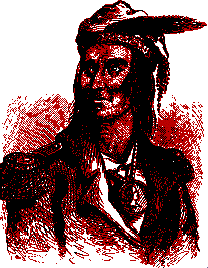
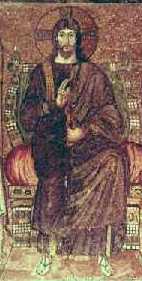
Indian influences on European philosophy
From On America's Pathological Behavior Toward Native Peoples by Steven Newcomb. In Indian Country Today, 9/10/04:
One clear example of how indigenous societies have influenced the world in the political realm is the extent to which the model of the Iroquois Confederacy influenced many of the founders of the United States such as Benjamin Franklin. "From America have emerged the cornerstones of the political philosophy that has transformed the world," wrote German Arciniegas in his book "America in Europe" (1980). The indigenous worlds -- concepts, technologies, medicines, foodstuffs, etc. -- of the Americas had a transforming effect on the dank and oppressive medieval culture of Christendom. Seeing examples of indigenous democracies of North America, eventually led European intellectuals to envision the possibility of a different kind of political order based on "liberty," without monarchy.
The French thinker La Boetie related the following: "If by chance different people are born today, who are not accustomed to servitude nor fear liberty, and they are bidden to choose between being slaves or living in freedom ... there is not doubt that they will be more inclined to obey reason than to serve other men." Such ideas flew in the face of the rigid hierarchical structuring of European society; and such ideas became a catalyst that transformed the world by giving voice to a concept unknown in medieval Christendom: "to be free."
Indigenous representatives have consistently provided insightful commentary on the taken for granted norms of European societies. Early on, such commentaries influenced European political philosophers and other Enlightenment intellectuals. What was normative for the Christo-European world was generally seen as pathological from an indigenous perspective. That this is so is reflected in a story related by the French essayist Montaigne about a time when King Charles of France thought that the splendor of his court might have greatly impressed some visiting Indians. When the king asked them for their opinion, the Indians made two key observations.
As German Arciniegas tells the story: "… they found it strange that so many older men, bearded and well armed, like the ones who make up his Majesty's entourage, rendered obedience to the monarch, who is a child, and that they should not choose instead the eldest among them to command them. Secondly, that among the people there should be a privileged half that enjoyed every luxury and comfort, while the other half were beggars who implored at the doors, wasting away from hunger and poverty. It seemed strange to them that this half that suffered such great injustice should not fly at the rich one's throats and set fire to their houses." Was this prescient of the French Revolution?
From Forgotten Founders: Afterword by Bruce E. Johansen:
In The Quest for Paradise, Sanford drew a relation between American Indians' conception of property and that expressed by Thomas More in his Utopia. Paul A. W. Wallace also likened the Iroquois' governmental structure to that of Utopia. Work could be done that would begin with the basis laid by Sanford, Robert F. Berkhofer, and Roy Harvey Pearce, which would examine how Europeans such as Locke and other seventeenth and eighteenth-century philosophers integrated observation and perception of American Indians into theories of natural rights. Michael Kraus (The Atlantic Civilization, 1949) wrote that during this period, anthropology was strongly influencing the development of political theory: "[Thomas] Hobbes and Locke, especially, show a familiarity with the social structure of the American Indians which they used to good purpose. Each of the English political scientists wrote in a period of crisis and in search of a more valid ordering of society. . . . The American Indian was believed to have found many of the answers." If such intellectual intercourse did, in fact occur, how did the Europeans get their information? How accurate was it? What other non-Indian precedents did they use in formulating their theories? How were these theories exported back to America, which, as Commager observed, acted the Enlightenment that Europe dreamed? Berkhofer quoted Locke as having written: "In the beginning, all the world was America." According to Berkhofer, Locke believed that men could live in reason and peace without European-style government; Berkhofer implied that Locke saw proof of this, as Jefferson and Franklin did, in the societies of the American Indians. Koch wrote that the English radicals of the eighteenth century were "students and advocates" of the American cause. Franklin, with his rich, firsthand knowledge of Indians and their societies, was well known in England before he began work there in the 1750s. Gillespie wrote that England had been suffused with influences from America, material as well as intellectual, as part of its rapid overseas expansion of empire. Gillespie noted Indian influences in More's Utopia and in Hobbes's Leviathan. Gillespie also found similar relationships in Locke's writings.
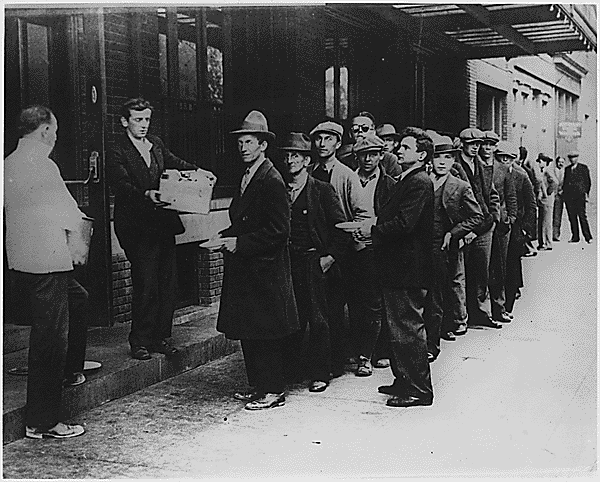
Indian culture also deeply influenced Karl Marx and Frederick Engels. Although communist dictatorships later misused Marxism, the theory was instrumental in overthrowing monarchies, eradicating class hierarchies, encouraging workers' rights (such as the right to unionize), and developing a social safety net (such as Social Security and other New Deal programs). As Johansen explains:
During the late 1870s and early 1880s, Marx remained an insatiable reader, but a life of poverty and attendant health problems had eroded his ability to organize and synthesize what he had read. After Marx died, Engels inherited his notes and, in 1884, published The Origin of the Family, Private Property and the State, subtitled In Light of the Researches of Lewis H. Morgan. The book sold well; it had gone through four editions in German by 1891. Engels called the book a "bequest to Marx." He wrote that Morgan's account of the Iroquois Confederacy "substantiated the view that classless communist societies had existed among primitive peoples," and that these societies had been free of some of the evils, such as class stratification, that he associated with industrial capitalism. Jefferson had been driven by similar evils to depict Europe in metaphors of wolves and sheep, hammer and anvil.
To Engels, Morgan's description of the Iroquois was important because "it gives us the opportunity of studying the organization of a society which, as yet, knows no state." Jefferson had also been interested in the Iroquois' ability to maintain social consensus without a large state apparatus, as had Franklin. Engels described the Iroquoian state in much the same way that American revolutionaries had a century earlier:
Everything runs smoothly without soldiers, gendarmes, or police, without nobles, kings, governors, prefects or judges; without prisons, without trials. All quarrels and disputes are settled by the whole body of those concerned. . . . The household is run communistically by a number of families; the land is tribal property, only the small gardens being temporarily assigned to the households — still, not a bit of our extensive and complicated machinery of administration is required. . . . There are no poor and needy. The communistic household and the gens know their responsibility toward the aged, the sick and the disabled in war. All are free and equal — including the women.
Johansen's conclusion:
The United States was born during an era of Enlightenment that recognized the universality of humankind, a time in which minds and borders were opened to the new, the wondrous, and the unexpected. It was a time when the creators of a nation fused the traditions of Europe and America, appreciating things that many people are only now rediscovering — the value of imagery and tradition shaped by oral cultures that honed memory and emphasized eloquence, that made practical realities of democratic principles that were still the substance of debate (and, to some, heresy) in Europe. In its zest for discovery, the Enlightenment mind absorbed Indian traditions and myth, and refashioned it, just as Indians adopted the ways of European man. In this sense, we are all heirs to America's rich Indian heritage.
Related links
Democracy rocks—with Indian help
America's cultural roots
The myth of Western superiority
Fun 4th of July facts
|
. . . |

|
All material © copyright its original owners, except where noted.
Original text and pictures © copyright 2007 by Robert Schmidt.
Copyrighted material is posted under the Fair Use provision of the Copyright Act,
which allows copying for nonprofit educational uses including criticism and commentary.
Comments sent to the publisher become the property of Blue Corn Comics
and may be used in other postings without permission.